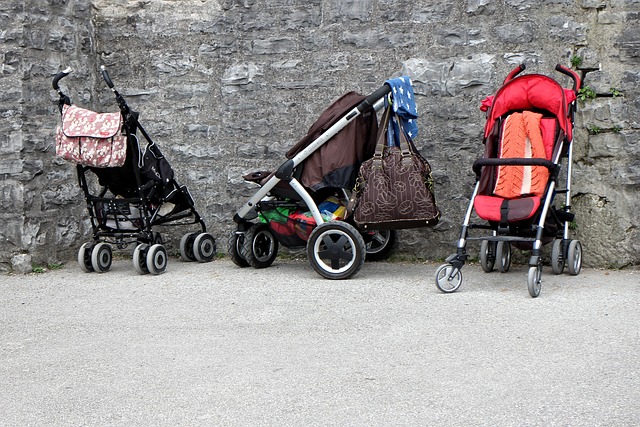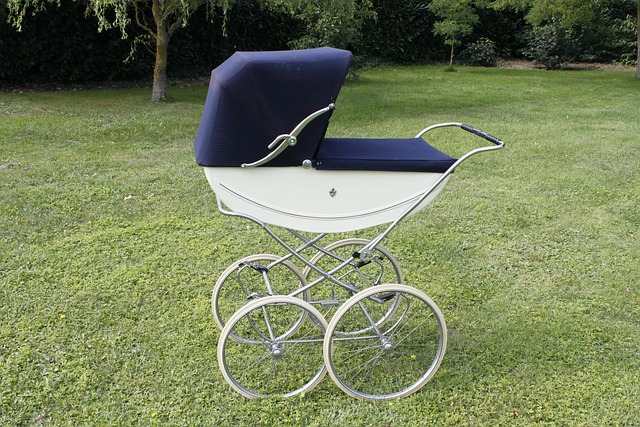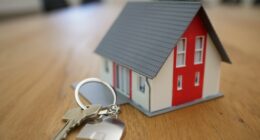A pram is designed for newborns, with a fully reclined position. A stroller is for older infants and toddlers, offering a more upright seat and collapsible frame.
TL;DR Pram Vs. Stroller
Prams are traditionally designed for newborns and provide a comfortable and cozy space for them to lie flat. They offer features such as large wheels, suspension systems, and adjustable handlebars for easy maneuverability.
Strollers are more lightweight and compact, making them suitable for older infants or toddlers. They typically have a seat that can be adjusted to different positions, allowing children to sit upright or recline when needed. Strollers also come with additional features like storage compartments, cup holders, and sunshades.
What is a pram?

A pram, short for perambulator, is a type of baby carriage designed for newborns. It typically features a fully reclined seat, providing a lie-flat position suitable for infants who cannot sit up independently.
Prams often have a sturdy chassis, large wheels, and a stable suspension system for a smooth ride. They prioritize comfort and protection, shielding the baby from the elements with a hood or cover.
While prams are ideal for short walks and newborns, they tend to be bulkier than strollers and may be less convenient for travel or storage due to their larger size and rigid design.
What is a stroller?

A stroller, also known as a pushchair or buggy, is a wheeled vehicle designed for transporting infants and young children. Unlike prams, strollers have a more upright seating position, suitable for older babies who can sit independently.
They often feature a collapsible frame, making them convenient for storage and travel. Strollers come in various styles, including lightweight umbrella strollers, jogging strollers for active parents, and travel systems that can accommodate car seats.
With maneuverable wheels and adjustable features, strollers offer versatility and are well-suited for navigating different terrains while providing a comfortable and convenient means of transportation for toddlers and young children.
Pram Vs. Stroller – Key differences
| Feature | Pram | Stroller |
|---|---|---|
| Age Range | Newborns | Older infants and toddlers |
| Seating Position | Fully reclined for a lie-flat position | More upright, suitable for sitting independently |
| Design | Sturdy chassis, large wheels | Collapsible frame, varied designs |
| Portability | Bulkier and less portable | Generally more compact and travel-friendly |
| Suspension System | Stable suspension for a smooth ride | Varies, may have adjustable suspension |
| Use Cases | Short walks, newborn comfort | Versatile for different terrains and activities |
| Convenience | Less convenient for travel and storage | Convenient, often collapsible for easy storage |
| Weight | Tends to be heavier | Lightweight options available |
| Specialized Types | Traditional prams, bassinet attachments | Umbrella strollers, jogging strollers, travel systems |
| Features | Focus on comfort and protection | Maneuverability, adjustable features |
Features and Functions of a Pram
Prams, or perambulators, are designed to provide a comfortable and protective environment for newborns. Features and functions of a pram typically include:
- Fully Reclined Seat: Prams have a seat that can be fully reclined, allowing infants to lie flat. This position is suitable for newborns who can’t sit up on their own.
- Sturdy Chassis: The frame of a pram is often robust, providing stability and durability.
- Large Wheels: Prams typically have large wheels, which contribute to a smoother ride for the baby and ease of pushing for the parent.
- Suspension System: Many prams come with a suspension system to absorb shocks, ensuring a comfortable ride for the baby.
- Hood or Cover: A pram usually includes a hood or cover to shield the baby from sunlight, wind, and other elements.
- Basket or Storage: Some prams have a storage basket underneath, providing space for essentials like diapers, toys, or groceries.
- Adjustable Handle: The handlebar of the pram may be adjustable to accommodate users of different heights.
- Brakes: Prams are equipped with brakes for secure parking.
- Convertible to Travel System: Some prams can be converted into a travel system by attaching a car seat, allowing seamless transition from strolling to car travel.
- Traditional Design: Prams often have a classic or traditional design, reflecting a nostalgic aesthetic.
- Bassinet Attachment: Some prams come with a bassinet attachment, providing a cozy and safe space for the newborn.
- Weight: Prams are generally heavier than strollers due to their sturdier construction.
Features and Functions of a Stroller
- Upright Seating: Strollers have a more upright seating position, suitable for infants who can sit independently and toddlers.
- Collapsible Frame: Strollers are designed to be collapsible, making them convenient for storage and travel.
- Maneuverable Wheels: Strollers often have swivel wheels for easy maneuverability, making them suitable for navigating crowded spaces.
- Adjustable Canopy: A canopy provides shade and protection from the sun, and it’s often adjustable to different positions.
- Harness System: Strollers come with a safety harness to secure the child in place.
- Brakes: Strollers have brakes for parking and ensuring the stroller stays stationary.
- Variety of Styles: There are different types of strollers, including umbrella strollers (lightweight and easy to fold), jogging strollers (designed for active parents), and travel system strollers (compatible with car seats).
- Multiple Recline Positions: Many strollers offer multiple recline positions, allowing the child to sit upright or recline for napping.
- Storage Options: Strollers often include storage features such as a basket underneath for carrying essentials.
- Adjustable Handlebar: Some strollers have an adjustable handlebar to accommodate parents of different heights.
- Cup Holders and Trays: Some strollers come with cup holders or trays for parents and children to keep snacks and drinks handy.
- All-Terrain Design: Certain strollers are designed for all-terrain use, with features like larger wheels and enhanced suspension.
- Convertible Travel System: Some strollers can be converted into a travel system by attaching a compatible car seat.
- Lightweight Materials: Many modern strollers are made from lightweight materials, making them easy to lift and maneuver.
- Five-Point Harness: Strollers typically feature a five-point harness for enhanced safety.
Image Credits
Featured Image By – Catherine from Pixabay
Image 1 By – Lynn Greyling from Pixabay
Image 2 By – Manfred Antranias Zimmer from Pixabay








